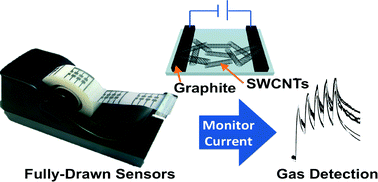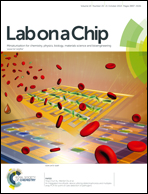Fully-drawn carbon-based chemical sensors on organic and inorganic surfaces†
Abstract
Mechanical abrasion is an extremely simple, rapid, and low-cost method for deposition of carbon-based materials onto a substrate. However, the method is limited in throughput, precision, and surface compatibility for drawing conductive pathways. Selective patterning of surfaces using laser-etching can facilitate substantial improvements to address these current limitations for the abrasive deposition of carbon-based materials. This study demonstrates the successful on-demand fabrication of fully-drawn chemical sensors on a wide variety of substrates (e.g., weighing paper, polymethyl methacrylate, silicon, and adhesive tape) using single-walled carbon nanotubes (SWCNTs) as sensing materials and graphite as electrodes. Mechanical mixing of SWCNTs with solid or liquid selectors yields sensors that can detect and discriminate parts-per-million (ppm) quantities of various nitrogen-containing vapors (pyridine, aniline, triethylamine).


 Please wait while we load your content...
Please wait while we load your content...